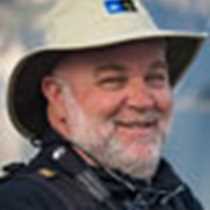“There’s something about three weeks…”
Was it only 21 days ago that we sailed west in this same body of water, almost trembling with anticipation of what was to come? Have we really come this far in so short a time? Perhaps each wave we passed was a mark of time, as if the ocean had replaced clocks as our timekeeping piece. Instead of 3723 nautical miles, it was ten million waves…
Or should we measure our time by the icebergs passing by, some so huge they earn a name; most simply beautiful, unique and anonymous. How do we account for a single morning with half a million king penguins and two thousand fur seals all celebrating the day at Salisbury Plain?
This expedition has required that we re-calibrate the concept of time. How many passing sea birds constitute five-hundred and four hours? If the flying birds measure the minutes of our hours, then whale spouts are surely the hours of each day; days that begin not with a sunrise, but rather a soft voice from the PA system, a system that now seems a far more advanced way to tell time than any Swiss watch.
How can we tell those who were not here about the night we walked on a field of frozen ocean, or the time we gazed at an emperor penguin? Or the thrill of killer whales chasing a penguin? Who will believe the afternoon we saw dozens and dozens of fin whales feeding all around us?
This voyage began with a ship full of strangers who had little in common other than a desire to explore. As National Geographic Orion sails west tonight in the Beagle Channel, she returns to Argentina filled with a single family, one-hundred brothers and sisters brought together by a place called Antarctica.
Tomorrow will be a day of farewells, of hugs and tears and handshakes, and slowly we will each fly off in our own directions - like wandering albatrosses, looking for new horizons.







